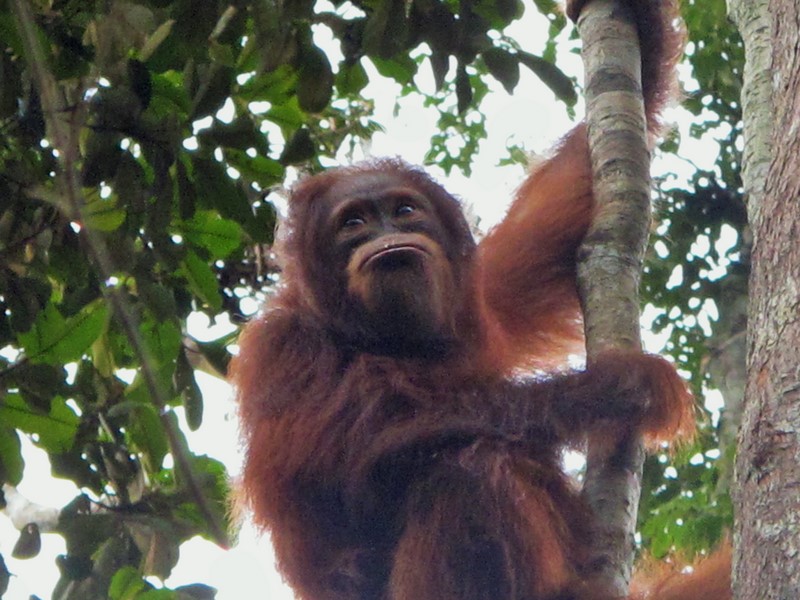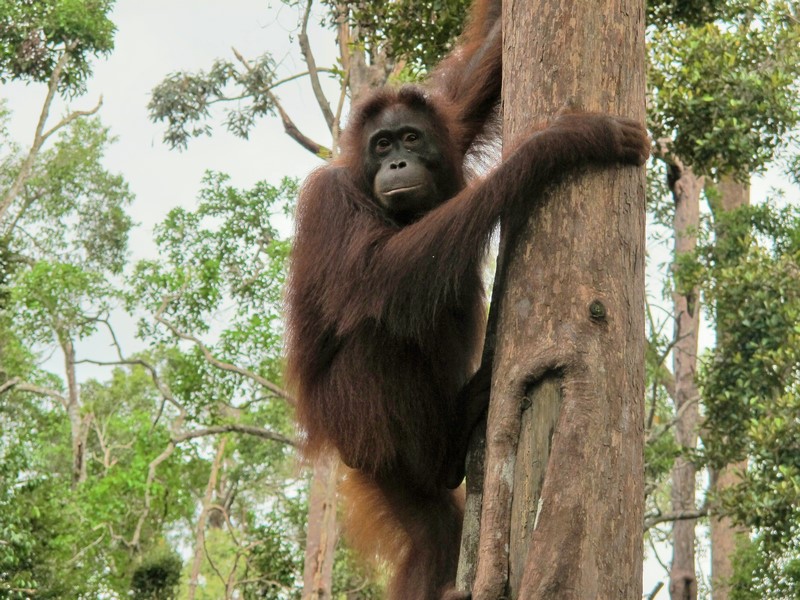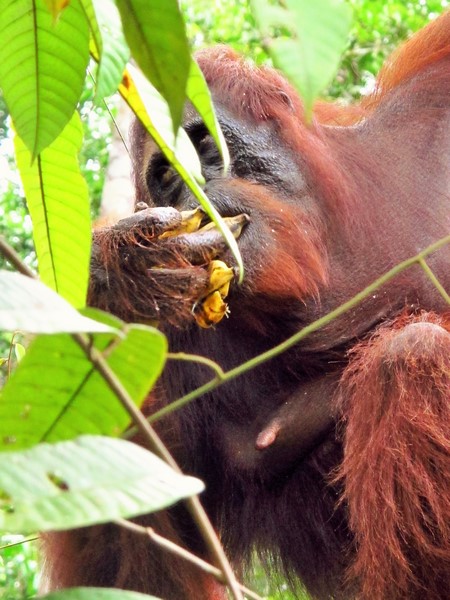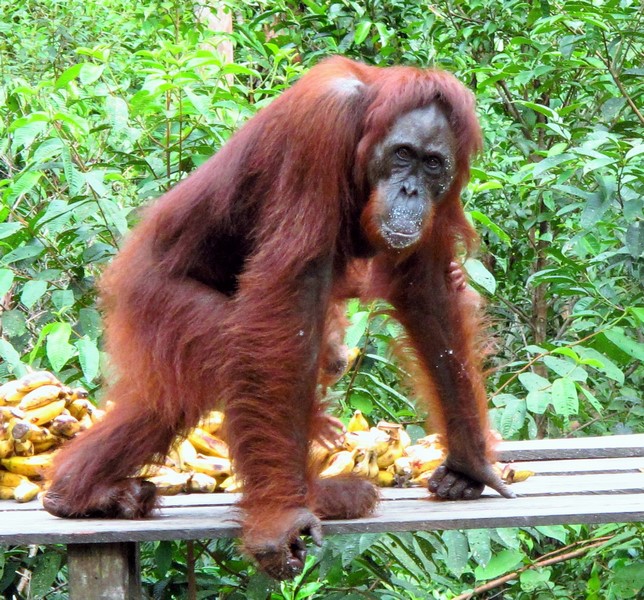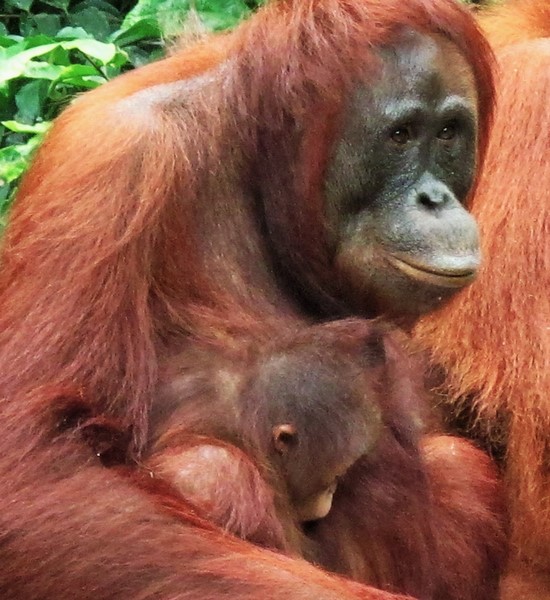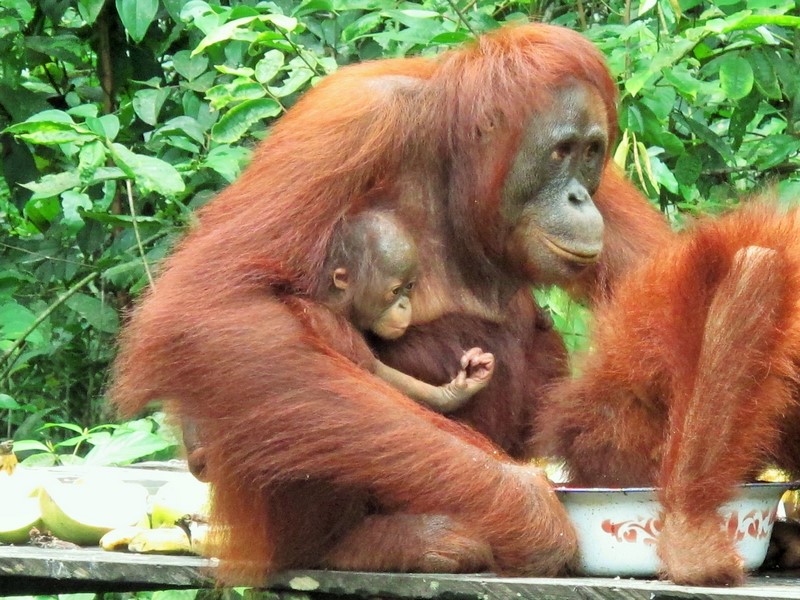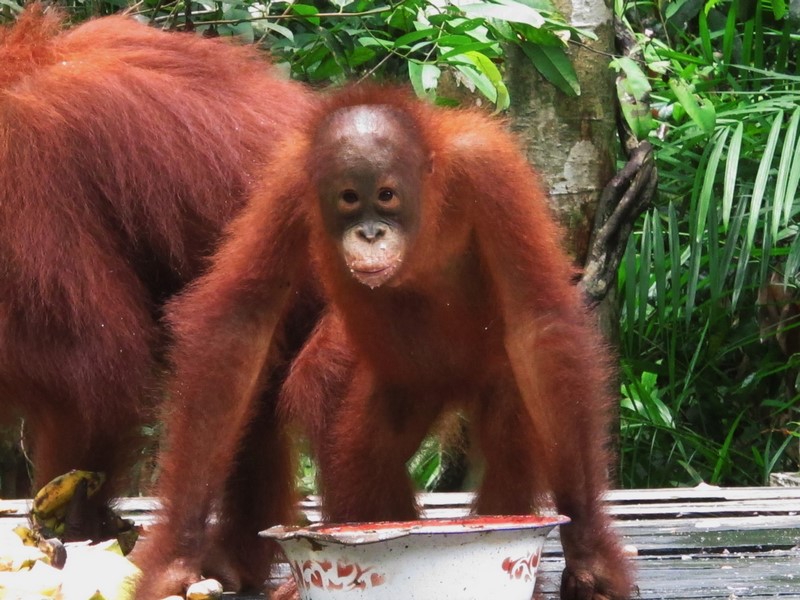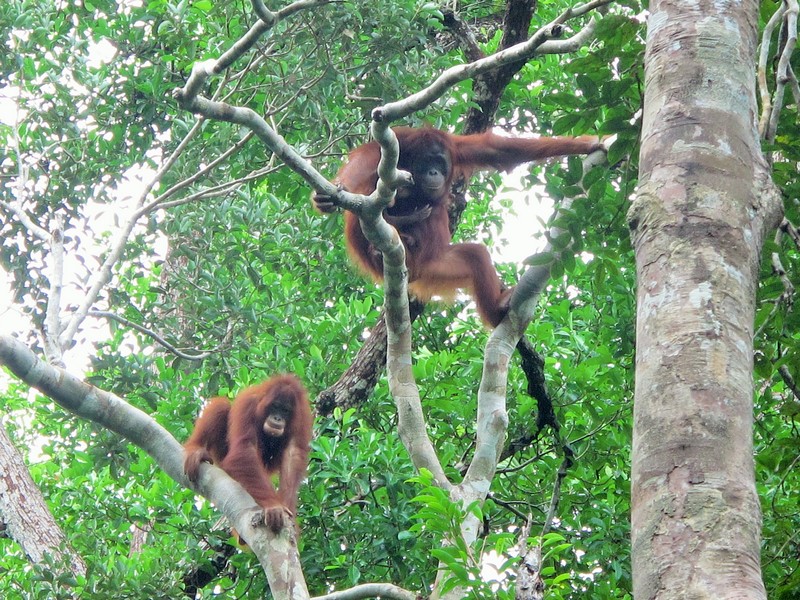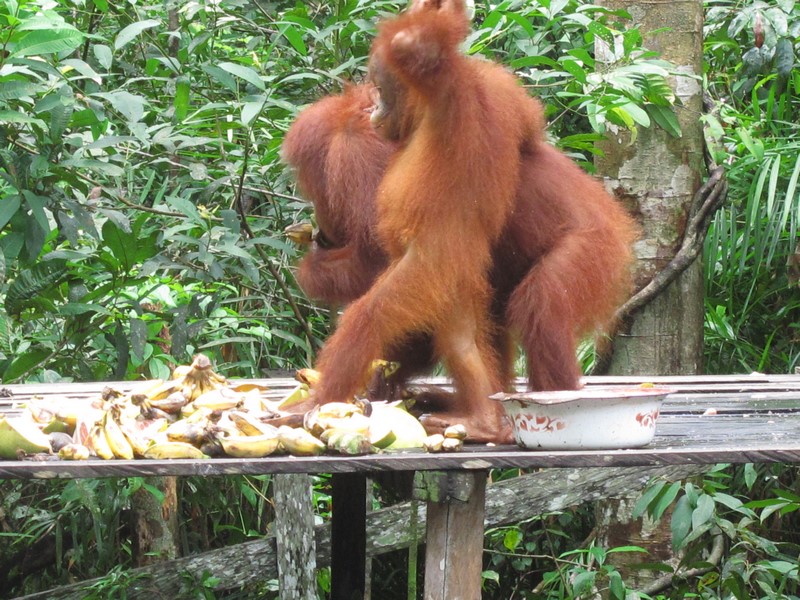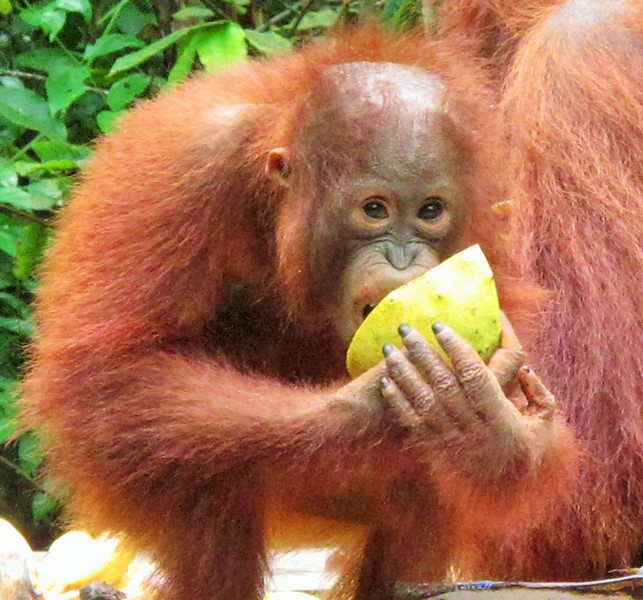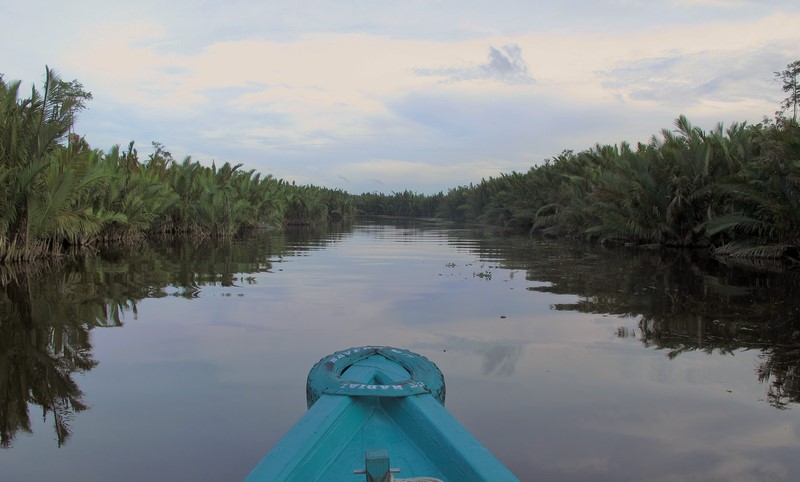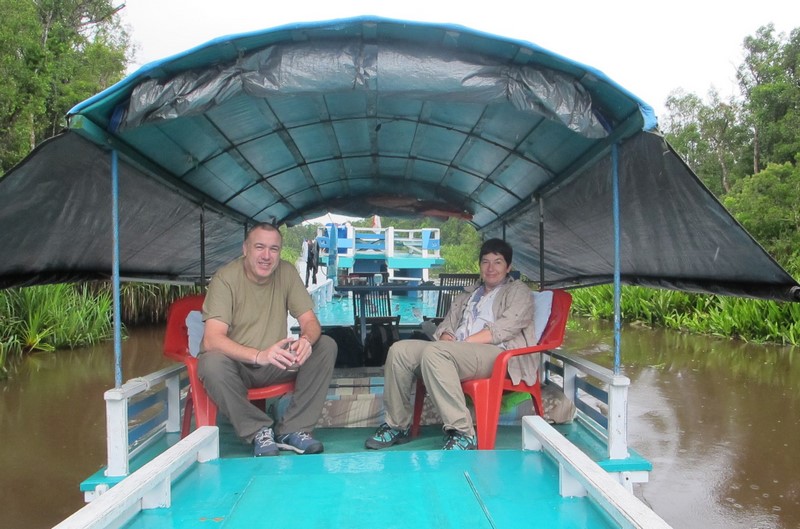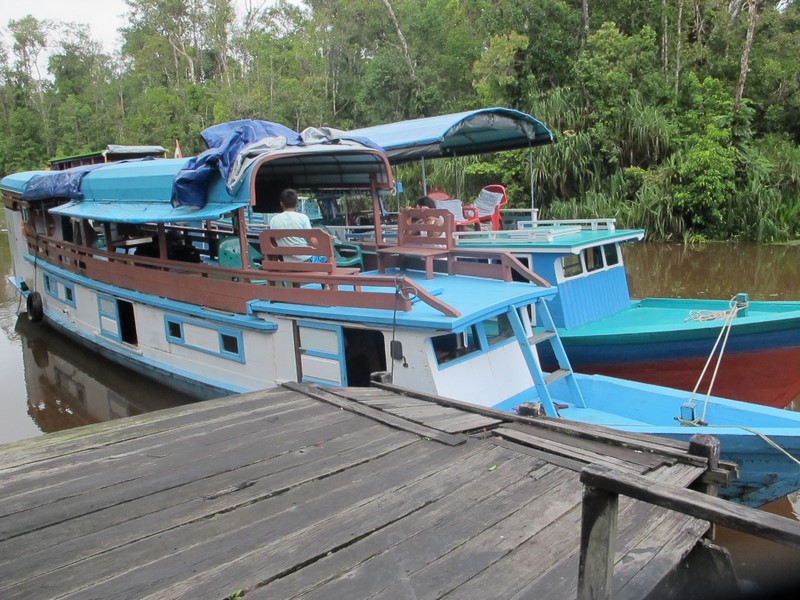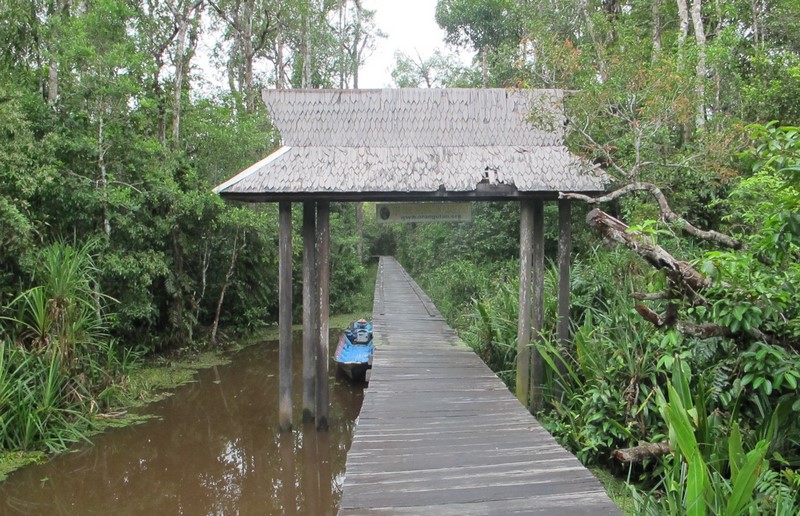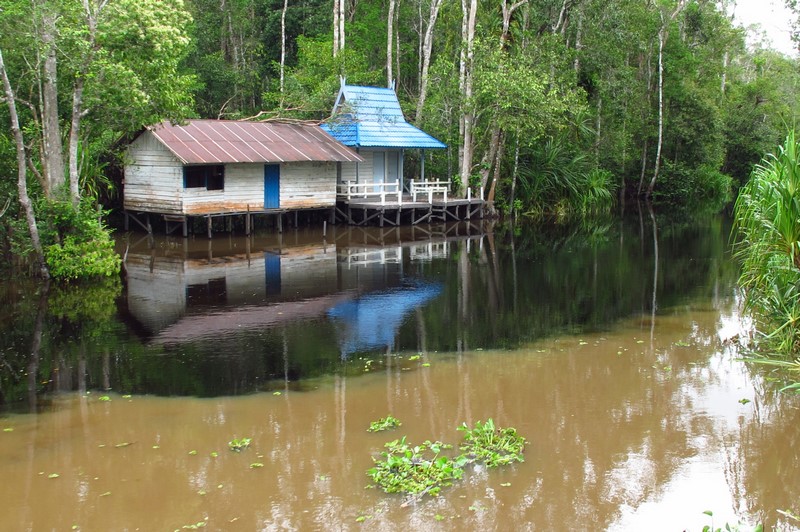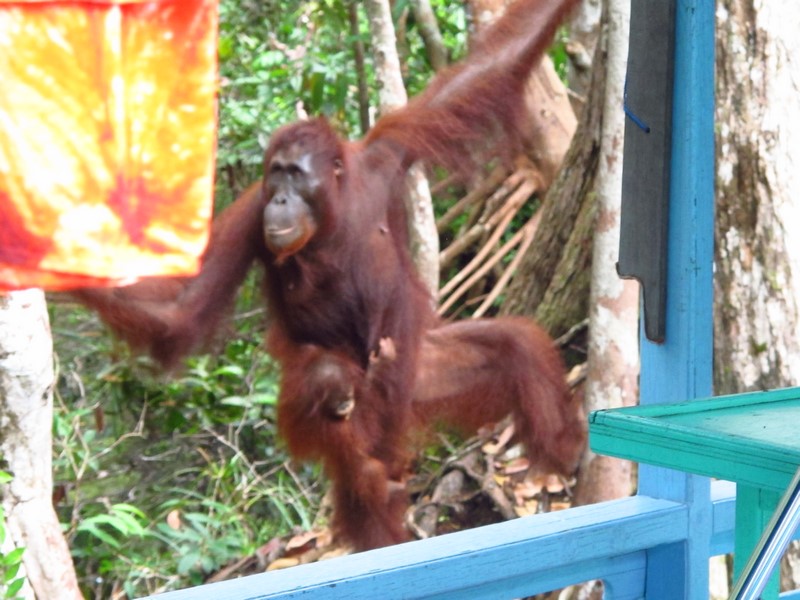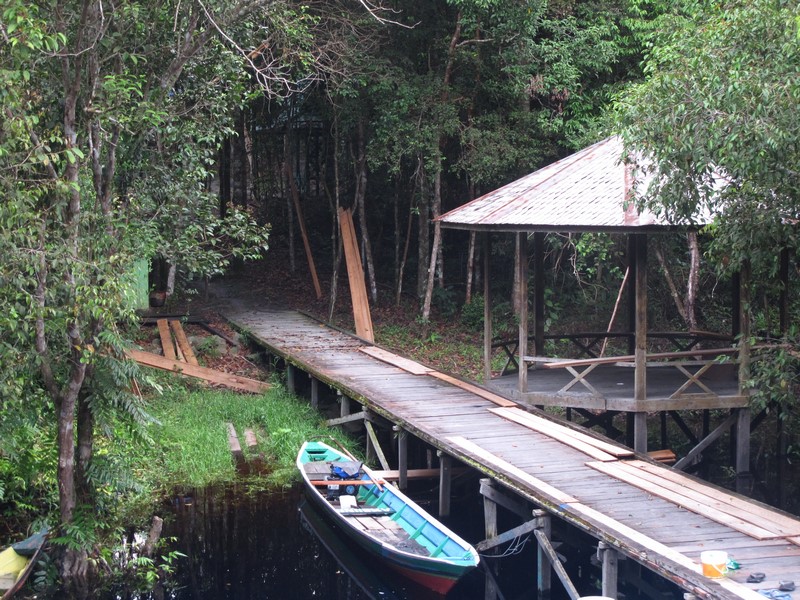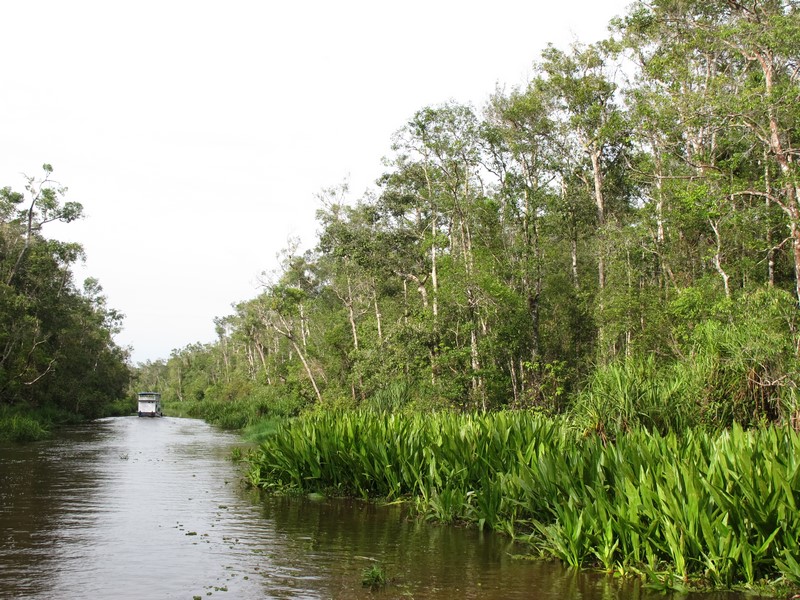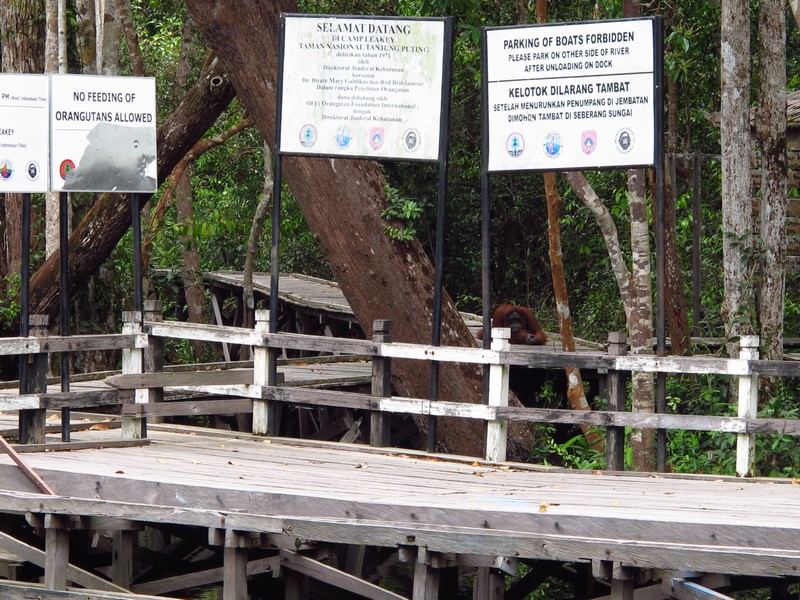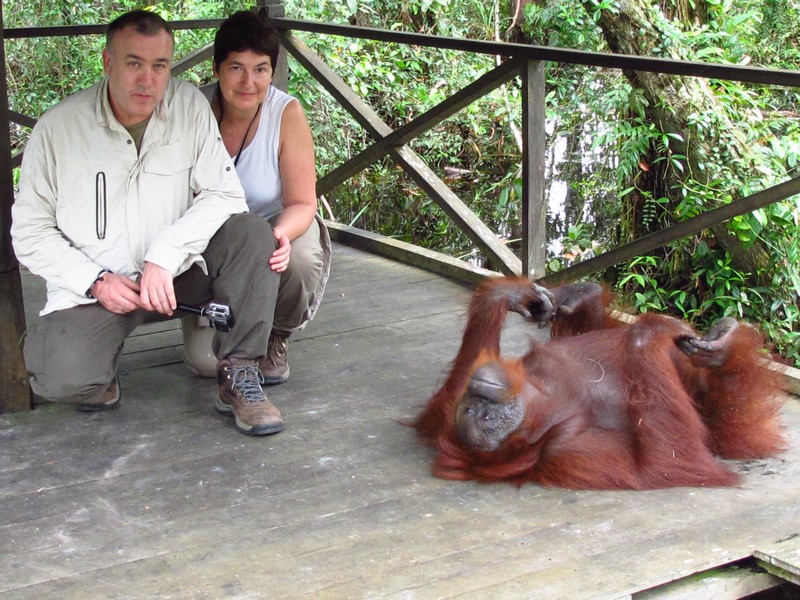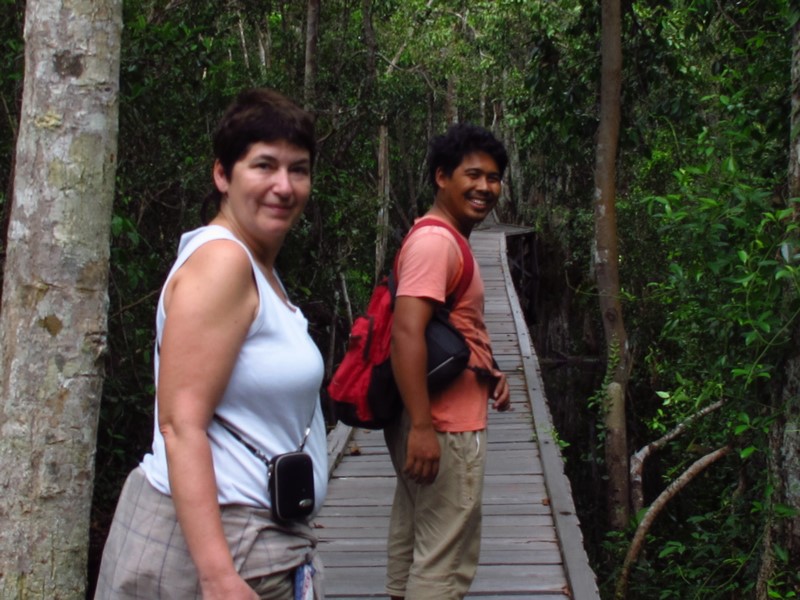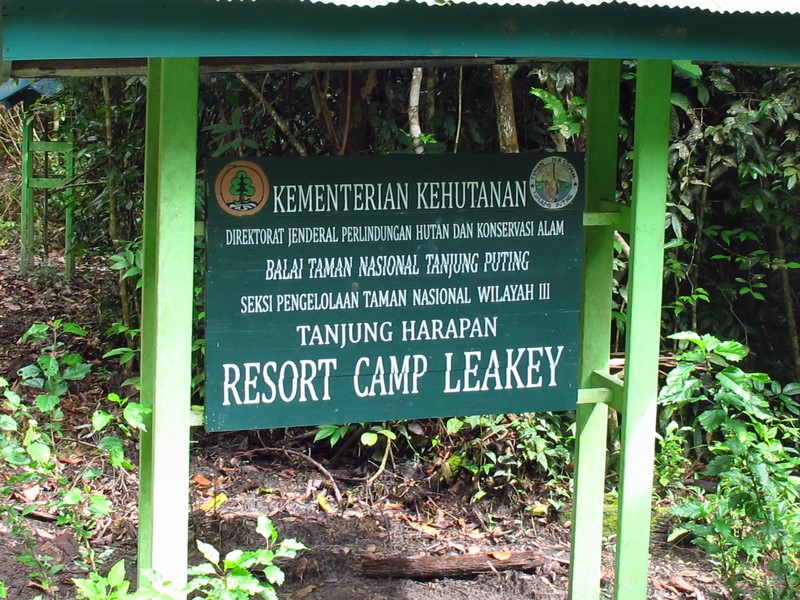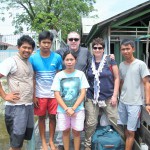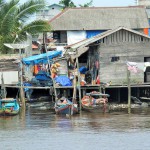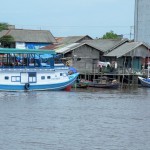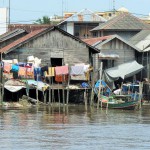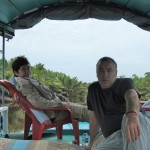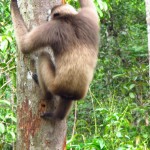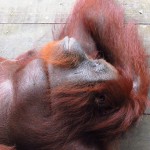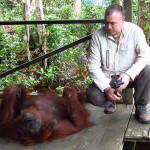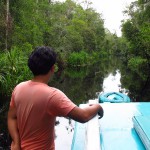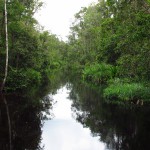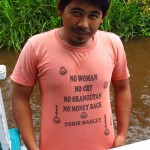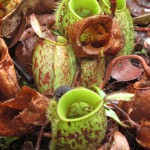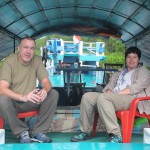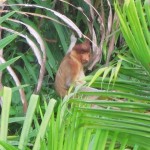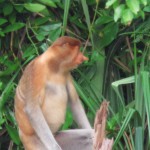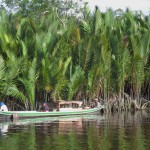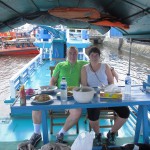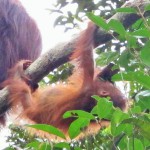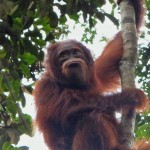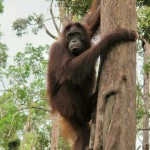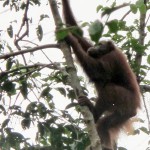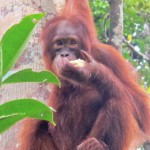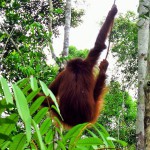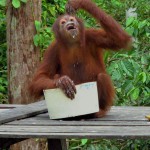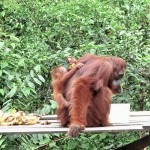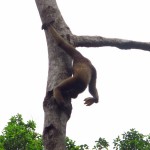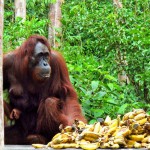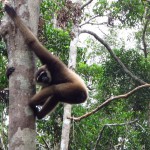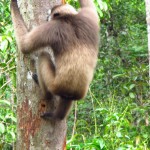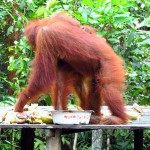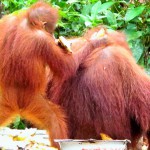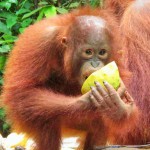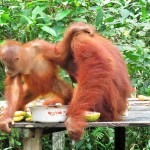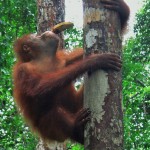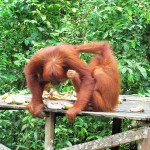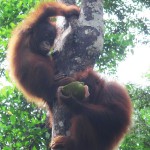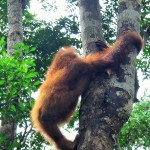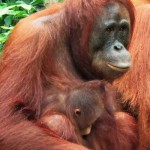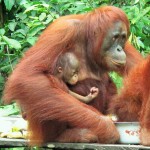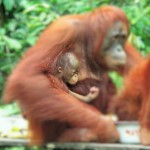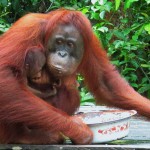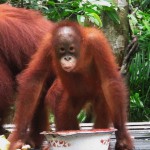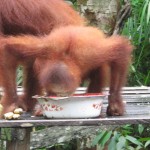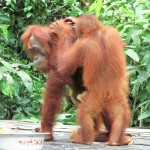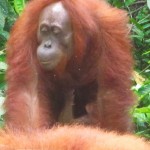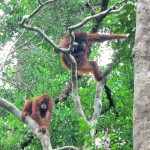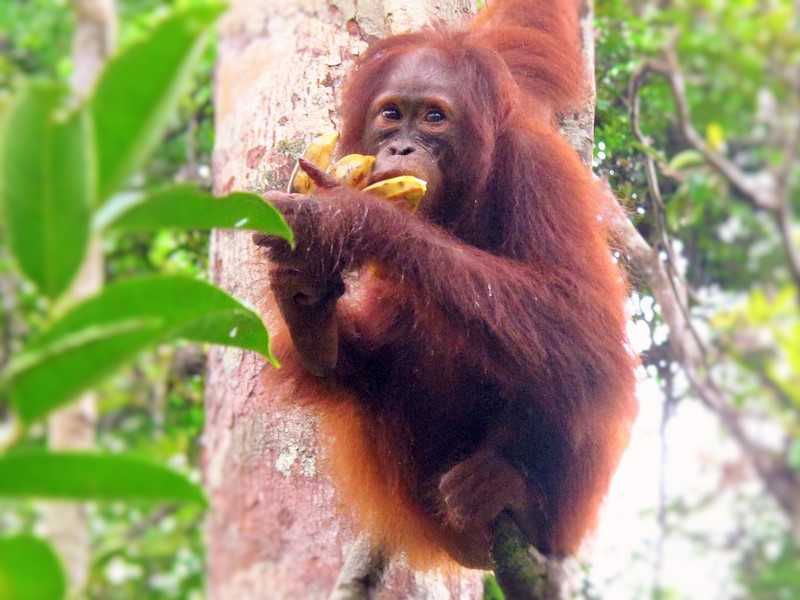
The orangutan is an endangered species. In Borneo and Sumatra there are several national parks where they are protected and assisted for the population to increase in the future.
In Borneo they are burning thousands of hectares of rainforest land to make palm oil plantations to extract the oil. Orangutan habitat is shrinking at an alarming rate and constant despite the efforts of many entities and private organizations trying that the impact is minimal. The orangutan is a sensitive animal who accuses extremally this environmental change that is occurring. Orangutans not only die because of fire but also often are killed and mutilated young. Then there are poachers who also seek their award as it is an animal well valued on the black market.
National Parks help for the reintroduction to the wild life of the young ones, who are alone in different places where they have killed their mothers, they are also help balance their diets and protect new pups are born..
Orangutans don’t live at any time in captivity, they live and build their own nests in trees and only they are helped giving them milk for babies and fruit to eat twice a day, in these moments is when visitors have the opportunity to photograph them.
We travel by plane from the city of Semarang in the north of the island of Java, after landing in Pangkalanbun reach the town of Kumai, once there we moved into the klotok (small wooden boat) we had contracted with the expert guide Jenie Subaru, although our private guide was his brother Toris, now we have a great friendship. Kumai is on the bank of river Sekonyer from where you can access the Tanjung Puting National Park, we went up upstream for over 40 kilometers. We stayed three days and spent two nights in the klotok in the middle of the jungle of Borneo, it’s been one of the most impressive tours we’ve ever done. The Tanjung Puting N.P. has 415,000 hectares and is bing protected but has more than 60% in degraded state what makes the wild and natural life is permanently at risk. It was created to protect the Bornean orangutan and other species like a monkey called probocsis.
Several Indonesian NGOs and the Foundation of Friends of the National Park are carrying out slow but progressive reforestation of damaged areas, the work of environmental restoration involved the planting of thousands of trees in order to recover the endemic biodiversity of the place .
There are four research and rehabilitation centers of orangutans and other primates within the park. Rehabilitation centers of orangutans whose mission is the hosting and rehabilitation for the wildlife of the Borneo orangutans displaced by deforestation elsewhere.
The oldest of these centers is Camp Leakey and it was founded in 1971 with the help of the Leakey Foundation. In this camp, Dr. Birute Galdikas one of the most renowned scientists in understanding the behavior of orangutans, his career began to study the behavior of orphan orangutans reintroduced to the wild.
The workers of the Park at 9.00 am and 14.00 p.m. at different points of the park the “call” the orangutans making noises and imitating their own sounds, so orangutans know they can go for picking up the food. In the dry season (December to April months) they can be seen more easily, but in wetter times and therefore greater abundance of fruits show themselves less.





